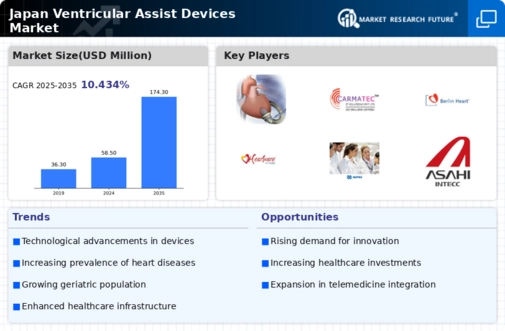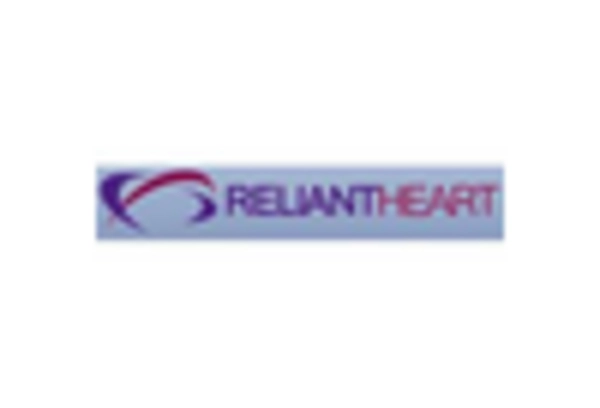Growing Awareness and Education
The rising awareness and education regarding heart health and treatment options are pivotal for the ventricular assist-devices market. Campaigns aimed at educating both healthcare professionals and the public about heart failure and available therapies are gaining traction in Japan. This increased awareness leads to earlier diagnosis and treatment, which can significantly improve patient outcomes. As more patients and families become informed about ventricular assist devices, the demand for these technologies is likely to rise. The ventricular assist-devices market is thus expected to benefit from this trend, as healthcare providers respond to the growing interest in advanced treatment options.
Increased Healthcare Expenditure
Japan's rising healthcare expenditure is a significant driver for the ventricular assist-devices market. The government has been investing heavily in healthcare infrastructure and technology to address the growing burden of chronic diseases. In 2025, healthcare spending is expected to reach approximately $500 billion, reflecting a commitment to improving health outcomes. This financial support facilitates the adoption of advanced medical technologies, including ventricular assist devices, as hospitals and clinics seek to provide cutting-edge care. The ventricular assist-devices market stands to gain from this trend, as increased funding allows for the procurement of innovative devices and training for healthcare professionals, ultimately enhancing patient care.
Rising Incidence of Heart Failure
The increasing prevalence of heart failure in Japan is a critical driver for the ventricular assist-devices market. As the population ages, the incidence of cardiovascular diseases rises, leading to a greater demand for advanced treatment options. Reports indicate that heart failure affects approximately 1.5 million individuals in Japan, creating a substantial market for ventricular assist devices. This growing patient population necessitates innovative solutions to manage heart failure effectively, thereby propelling the market forward. Furthermore, the healthcare system's focus on improving patient outcomes and reducing hospital readmissions aligns with the adoption of these devices. The ventricular assist-devices market is thus positioned to expand as healthcare providers seek to implement effective therapies for heart failure management.
Supportive Regulatory Environment
A supportive regulatory environment in Japan is fostering growth in the ventricular assist-devices market. The Pharmaceuticals and Medical Devices Agency (PMDA) has streamlined the approval process for innovative medical devices, encouraging manufacturers to bring new products to market. This regulatory support not only accelerates the availability of advanced ventricular assist devices but also enhances patient access to cutting-edge therapies. As of 2025, the market is witnessing an influx of new entrants and products, driven by favorable regulations. The ventricular assist-devices market is likely to thrive as manufacturers capitalize on this environment to introduce innovative solutions that meet the needs of patients and healthcare providers.
Technological Innovations in Device Design
Technological advancements in the design and functionality of ventricular assist devices are significantly influencing the market in Japan. Innovations such as miniaturization, improved biocompatibility, and enhanced battery life are making these devices more accessible and effective for patients. The introduction of wireless monitoring systems allows for real-time data tracking, which can lead to better patient management and outcomes. As of 2025, the market is projected to grow at a CAGR of around 8%, driven by these technological improvements. The ventricular assist-devices market is likely to benefit from ongoing research and development efforts aimed at creating more efficient and user-friendly devices, ultimately enhancing patient quality of life.

















Leave a Comment